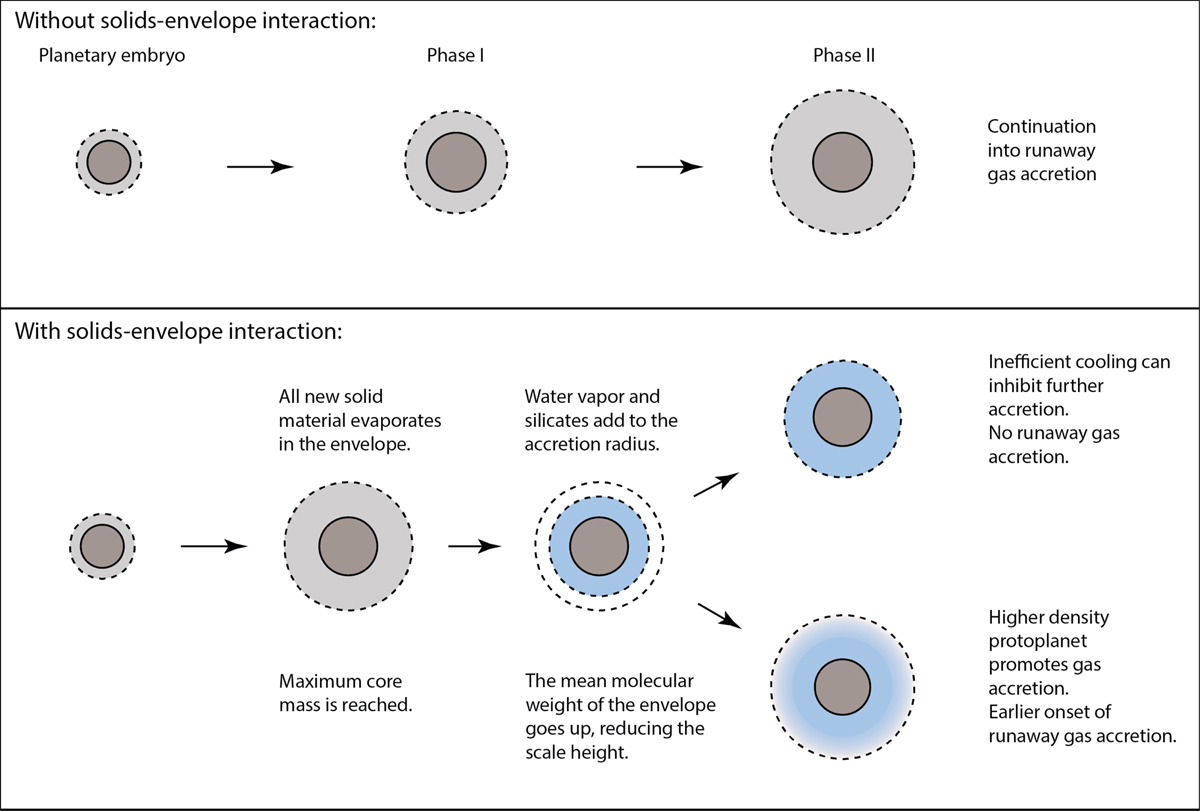Fig. 1

Download original image
Schematic overview of pre-runaway envelope accretion. When the solid material does not interact with the envelope, the gas accretion is initially determined by the size of the core and the strength of the accretion luminosity (Phase I). The core stops growing when there is no more solid material available, so the envelope accretion rate is determined by the cooling timescale of the protoplanet (Phase II). If Phase II is efficient, the planet can reach critical mass within the lifetime of the protoplanetary disk. It will go into runaway accretion and become a gas giant. Gas accretion from the nebula is different when the interaction of the solid material with the envelope is considered. Part of the ice and/or silicates will vaporize rather than reaching the core in solid form. This increases the envelope metallicity. The increased metallicity can, on the one hand, inhibit further gas accretion by increasing opacities in the envelope, which hinders cooling. On the other hand, the increased mean molecular weight increases the mean density of the envelope, which promotes gas accretion.
Current usage metrics show cumulative count of Article Views (full-text article views including HTML views, PDF and ePub downloads, according to the available data) and Abstracts Views on Vision4Press platform.
Data correspond to usage on the plateform after 2015. The current usage metrics is available 48-96 hours after online publication and is updated daily on week days.
Initial download of the metrics may take a while.


